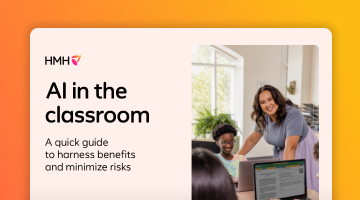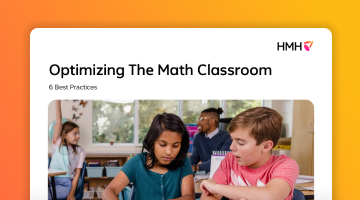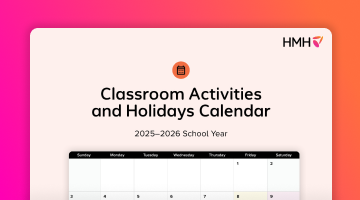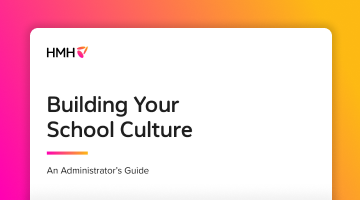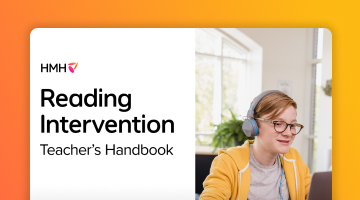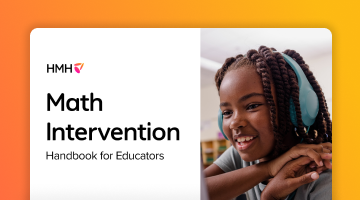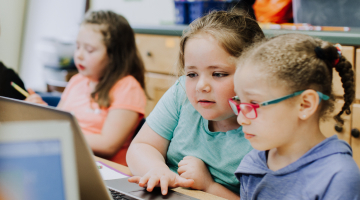
All students come into the classroom with a collection of lived experiences, which vary—sometimes drastically. Say there’s an upcoming unit on ocean ecosystems. We can’t assume all students come in with the same knowledge about an aquatic environment. One student may have had the opportunity to travel to the Caribbean and snorkel among sea creatures in a coral reef. Another student may have only seen a school of fish on a tablet screen. So how can we bridge gaps and ensure all students develop an understanding of the topic at hand?
Before diving headfirst into a lesson, it’s essential to access and activate students’ existing knowledge. Doing so better supports students in building on their understanding and making connections. And for English language learners, who come with diverse cultural and linguistic backgrounds, building on the rich background knowledge they bring with them supports their comprehension of new information presented in English.
A note on language: we use the common phrases multilingual learner, English learner, and English language learner, along with the acronym ELL, but we also recognize that students who are learning English do not fit neatly into a single label.
Building Background Knowledge for ELLs
Background knowledge, also referred to as prior knowledge or content knowledge, is the information students bring to the classroom, either learned formally at school or informally through real-world experiences. Students can gain background knowledge through reading a book, watching a movie, or chatting with family.
Students’ background knowledge serves as the foundation for their learning. In fact, studies indicate that the more knowledge learners have on a topic, the better they will understand and retain new information.
Support multilingual learners in learning new information and building on their background knowledge with the following strategies.
- Make Use of Visuals: Visual tools, like pictures, videos, photographs, and realia (real-life objects), can help students better grasp the concept and relate it to their existing knowledge.
- Preview Vocabulary: Prior to starting a lesson, pre-teach content words and academic vocabulary words. Display visuals and examples of the terms that will pop up in the lesson. Previewing vocabulary is not limited to content-specific or academic language. Students may need support in understanding figurative language like idioms, so plan to define and explain this language as well.
- Provide Experiential Activities: Hands-on activities and real-life experiences help students make connections to their background knowledge. So, lead a demonstration, go on a field trip, or conduct an experiment to build on background knowledge.
Activating Prior Knowledge for English Language Learners
Before introducing new information, teachers should gauge what is already known by activating prior knowledge. Activating prior knowledge is the process in which teachers elicit students' content knowledge and make connections between what they know and what they will learn.
Students may need support in tapping into their background knowledge. Consider the following strategies to help ELL students activate their prior knowledge.
- Pose a Question: To get students thinking about what they know, pose an opening question. For a unit on the ocean ecosystem, this could be something like, what do you know about coral?
- Use Graphic Organizers: Graphic organizers are visual tools that help students organize their background knowledge and understanding. Use graphic organizers that are useful to English language learners, like KWL charts, so students can identify what they know about a topic and what they want to know.
- Get Students Talking: Whether in a whole-group discussion or small-group conversation, open the floor for students to talk about what they know. Use response frames to help multilingual learners confidently brainstorm their ideas aloud and share what they know with their peers. English 3D
provides response frames to activate student’s prior knowledge.

Find debate questions, verbal response frames, and graphic organizers to activate prior knowledge in English 3D.
Whatever background knowledge students bring with them, it’s important tap into their experiences and build on them through purposeful learning activities.
***
Address the range of English learners' needs with our English language development programs.
Download our free guide to using response frames with multilingual learners.

